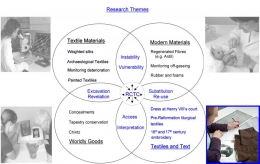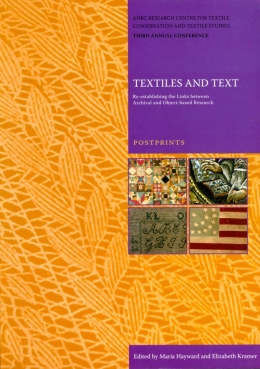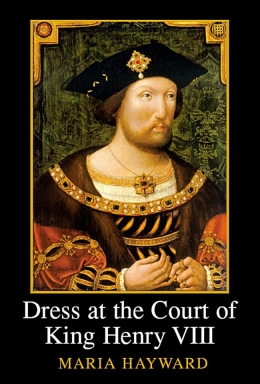Textiles & Text
The integration of evidence from material and archival sources, including:
- A comparative study of the iconography, materials and construction of 16th/17th century English Embroidery. These embroideries are highly prized, and many survive in both public and private collections. They are made with a wide range of textile and non-textile materials, and often incorporate gold sequins and silver gilt threads. This study was the final phase of a three-phase project carried out by Mary M. Brooks in conjunction with the Ashmolean Museum.
- A comparative study of Pre-Reformation liturgical textiles. Most historians of the Reformation have focussed on evidence gleaned from written sources, in particular wills. However, neglected sources, namely parish inventories and liturgical textiles, are the focus of this study and they will reveal many new facts about the church, liturgical textiles and peoples' attitudes to their faith in mid-16th century England. This was the second part of a two-part study by Maria Hayward. The first part, completed in 1999/2000 and funded by a University of Southampton Research Grant, consisted mainly of data collection, in the sense of identifying surviving vestments in the UK. The second stage allowed this material to be compared with archival records, as well as enabling some materials’ analysis to be undertaken, e.g. dye analysis.
- A study of male and female dress worn at the court of Henry VIII (ruled 1509-47) which included the dress of the king and his immediate family, the royal household and the broader court circle, consisting of the nobility and leading clergy. Evidence was drawn from the Great Wardrobe accounts, wardrobe warrants and inventories, and it was interpreted using evidence from narrative sources, paintings, drawings and surviving garments. Key areas for consideration included the cut and construction of garments, materials and colours, the function of livery and the hierarchy of dress, the network of craftsmen and merchants working for the court. Evidence concerning ephemeral garments made for jousts and revels, ceremonial wear, dress given as gifts for weddings or diplomatic reasons was also studied.



